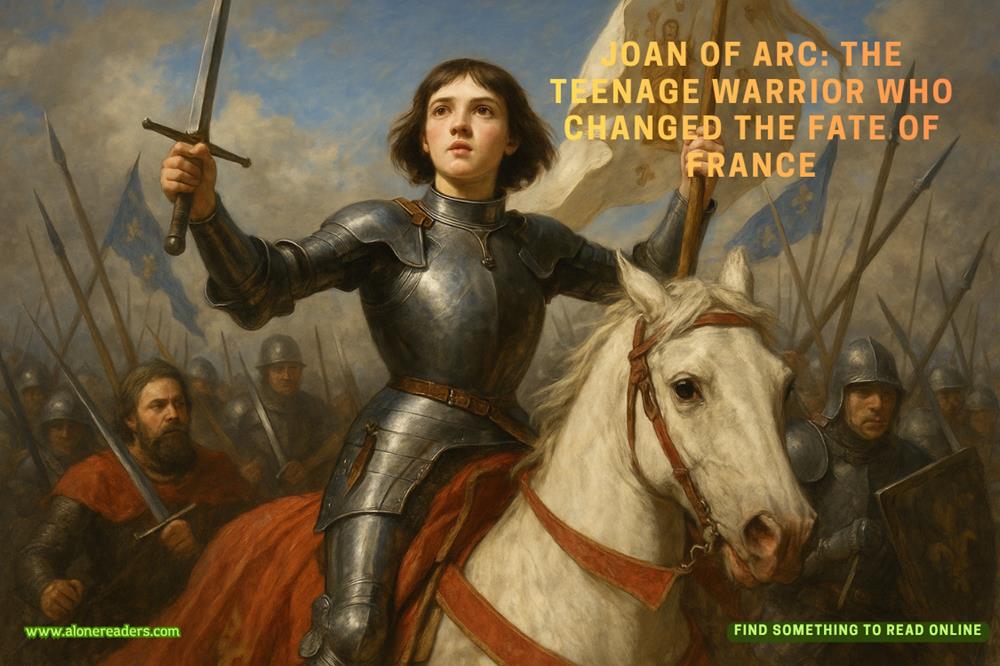Page 44 of The Secret
Flemming dropped the receiver back into its cradle and lifted the gun. He braced it against his shoulder, pointed it at Reacher, and said, “Sarbotskiy doesn’t know you.”
Reacher said, “Call him back. Remind him about the fire. I was very specific about where he’s going to be when I start it.”
Flemming lowered the gun. A tiny hint of a smile flashed across his face and he said, “Sarbotskiy told me if you came back with that, you’re OK. So. What do you want to know?”
Reacher moved closer. He said, “Is it true that there was a program running parallel with Project 192? One that created offensive bioweapons? Project Typhon?”
“Yes. Absolutely. Although that name came from the KGB. It was never official.”
“How do you know about it?”
“Research. I was good, once, remember. I put in the hard yards. Here, and in India. I know partly because of the facts I pieced together. The kind of chemicals that were shipped to the site. The equipment that was used. The protective clothing that was brought in. The precautions that were taken. Snippets I picked up from lab techs and cleaners. But mainly because of the bodies.”
“People died?”
Flemming nodded. “ ’Fraid so.”
“They were experimented on?”
“No. There was an accident. A leak. One night in December ’69.”
Reacher said, “An accident? Are you sure? Because I hear about an accident and I know the CIA was involved, and my bullshit meter goes off the scale. No offense, Neilsen.”
Neilsen said, “None taken. I was thinking the same thing.”
Flemming paused. “Let me back up a minute. I’m not explaining this right. The incident that caused the deaths was sabotage. One hundred percent. There’s no doubt about it. But it was aimed at Mason Chemical Industries. The civilian corporation that was used to shelter the covert operation. The guy who did it was just a disgruntled employee. Morgan Sanson, he was called. He had no idea Project 192 even existed. Let alone a parallel project to produce offensive weapons. He impacted those by accident.”
“So what was his story?”
“It was sad, really. He had all kind of beefs. You name it. Pay. Conditions. Not enough vacation days. Lack of opportunities for promotion. No one in management would listen to him. There was no union so he couldn’t get any traction as an individual. So he had the genius idea to mess up some equipment. Cost the company some money. Get attention that way. One night he switched off the water supply that fed a cooling system. He thought it was something minor. It was actually totally critical to 192 and Typhon, but obviously there were no signs saying so. Nothing in the site manual about it. The increase in temperature caused an over-pressurization in a storage tank, which burst, and a bunch of gas leaked out. A lot of people died. Civilians. Locals. It wasn’t pretty. I was there. I took pictures.”
“How many casualties are we talking about?”
Flemming held up his finger. “This is where it gets interesting.” He crossed to one of his shelves and stared at all the stuff piled up there for a second. Then he pulled out a binder, blew some dust off it, leafed through until he found the right page, and handed it to Reacher. Smith and Neilsen closed up on either side and together all three read the article. It was fromThe New York Times.Its date was January 13, 1970. The paper was yellow and it looked thin and fragile inside its protective plastic sleeve. There was a photographof a woman in a lab coat at the top of the page. Her hair was tied back. She was wearing glasses. She looked young and earnest and pretty. The text that surrounded her picture reflected some of what Flemming had said. It told of a radical employee. Vandalism. A gas leak. An experimental disinfectant that would bring major benefits to underprivileged communities as soon as it gained regulatory approval. It mentioned seven fatalities, and stressed that the toll would have been much worse if not for the rapid response from the company’s emergency team. A second photograph showed the bodies. They were lying in a field of long grass and flowers. They were dressed in clean, pale-colored clothes. Their faces looked calm. Almost serene. It was like they were returning home from a stroll in the countryside and had decided to take a nap in the afternoon sun.
Reacher looked at Smith and Neilsen in turn. That was not what he’d expected to read or see. He could tell from their expressions that they were surprised, too. And not in a positive way. He felt like the ground had shifted a little beneath his feet. The article told of a tragedy. That was for sure. But it was pretty light on shock value. It didn’t establish much of a motive for multiple murders. He could feel their theory begin to wobble.
Flemming took the binder and said, “That’s what appeared in theTimes.It’s not what I wrote.” He took a different binder from the shelf and passed it to Reacher. “My piece is in here. Remember, I’m not supposed to have this. I swore I’d handed everything over. You can’t tell anyone you’ve seen it.”
This binder didn’t contain newsprint. Just regular letter paper covered with double-spaced, typewritten text. It told a story that was similar in some respects. It included a saboteur. A gas leak. Dead civilians. But in other ways it was very different. It involved secret government research. The CIA. Nerve agents. A corporation panicking over a potential PR disaster. A cover-up operation. Butthe most dramatic discrepancy came in terms of the death toll. This version didn’t tell of seven fatalities. It claimed that 1,007 people had lost their lives.
“Turn the page,” Flemming said when he saw from their faces they had finished reading. “But only if you have strong stomachs.”
The next plastic sleeve held a photograph. It was ten inches by eight. This one was in color and it was sharper than the newspaper image. It showed a different kind of field. There were no flowers. No plants. Nothing living at all. Just dust and rocks and corpses. It was a wide shot to establish the scope of the scene. It captured a huge expanse and the whole space was filled with bodies. They were twisted into alien, distorted shapes like the victims had been convulsed in unspeakable agony at the moment of release.
“Turn again,” Flemming said.
The next sleeve held another photograph. A close-up of a victim’s face. Her eyes were screwed shut. The flesh was pulled tight over her cheekbones. Her mouth was stretched open in an eternal scream. Her skin was stained with weird purple blotches.
“Again.”
There were thirty-four more pictures in the binder. All of corpses. Some on their own. Some entangled. All having clearly perished in hideous pain.
“Awful,” Smith said. “Just awful. I can see why the government was desperate to stop the story getting out. That doesn’t justify what they did to you, though.”
“Thank you.” Flemming took the binder back and replaced it on the shelf.
Reacher said, “I want to know more about the saboteur. This guy Sanson.”















